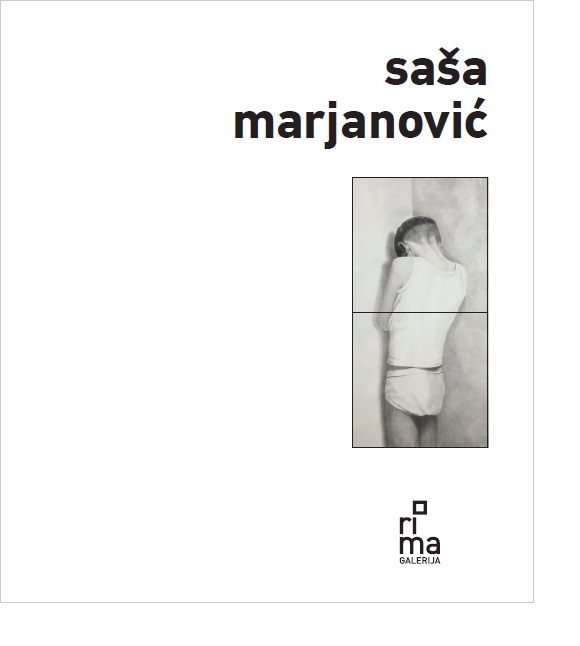 Vojislav Karanović
Vojislav Karanović
MASKS AND THEIR FACES
(...)
Saša Marjanović’s new drawings are mostly in dialogue with Michael Haneke’s film White Ribbon. Strange and mysterious events in a small village in the north of Protestant Germany, at the time of the Great War, where everyone has his own secret, introduce us to the film with intermingled stories about the parents’ violence over children, the violence of children over other children and of the society over individuals. Violence is not always easily visible, sometimes even masked as concern for good upbringing, for example, but it does not mean that it is then less dangerous or less damaging. The author of this film places the dogmas of Christian upbringing under a magnifying glass: on the one hand they assume a strict and unyielding educator and on the other, obedience and full submission of children. The film also implies that victims can easily become tormentors, or that punishment has a spiritually destructive effect both on the executors and the tormented. Children are, not accidentally, in the centre of this film’s attention. They suffer punishment, they are required to adapt to the collective and relinquish their right to be different, individual and creative. Children must restrain their own sexuality and control their spontaneous expression of feelings. They have to be uniform, to cover their faces with socially acceptable masks. As a consequence, those little people begin to suppress very much and that dark and suppressed side of their personalities – found with grown-ups as well – is the real threat. Nevertheless, the grown-ups, who consistently insist on discipline and the respect of rules, will easily bypass everything if their lives directly depend on that. The world where cruelty and violence are thriving is also the world where hypocrisy and lies rule.
These two worlds are never apart.
Some of the ideas from the White Ribbon we find in the drawings of Saša Marjanović. Let us repeat: these works, most of them, are in a dialogue with the film. Scenes, the atmosphere, the play of black and white hues, the children who suffer punishment and begin to hide from others, the false insistence on virtue and honesty – all those are the things that Marjanović’s latest artistic gesture relates to the world of Haneke’s film.
And finally, let us mention the white ribbon itself – in the film it is the symbol of supposedly frank insistence on children’s propriety and virtue. The village pastor binds the ribbon around the arm or in the hair of his own children so that they should always be reminded to be good and honest. In fact, this ribbon turns into a symbol of hypocrisy and repression. Innocence and purity are the highest moral values, but if imposed by force and if people are threatened by horrible punishment if they do not accept them, then they lead to spiritual and social void.
(...)
(COMPLETE TEXT IN PRINTED EDITION)